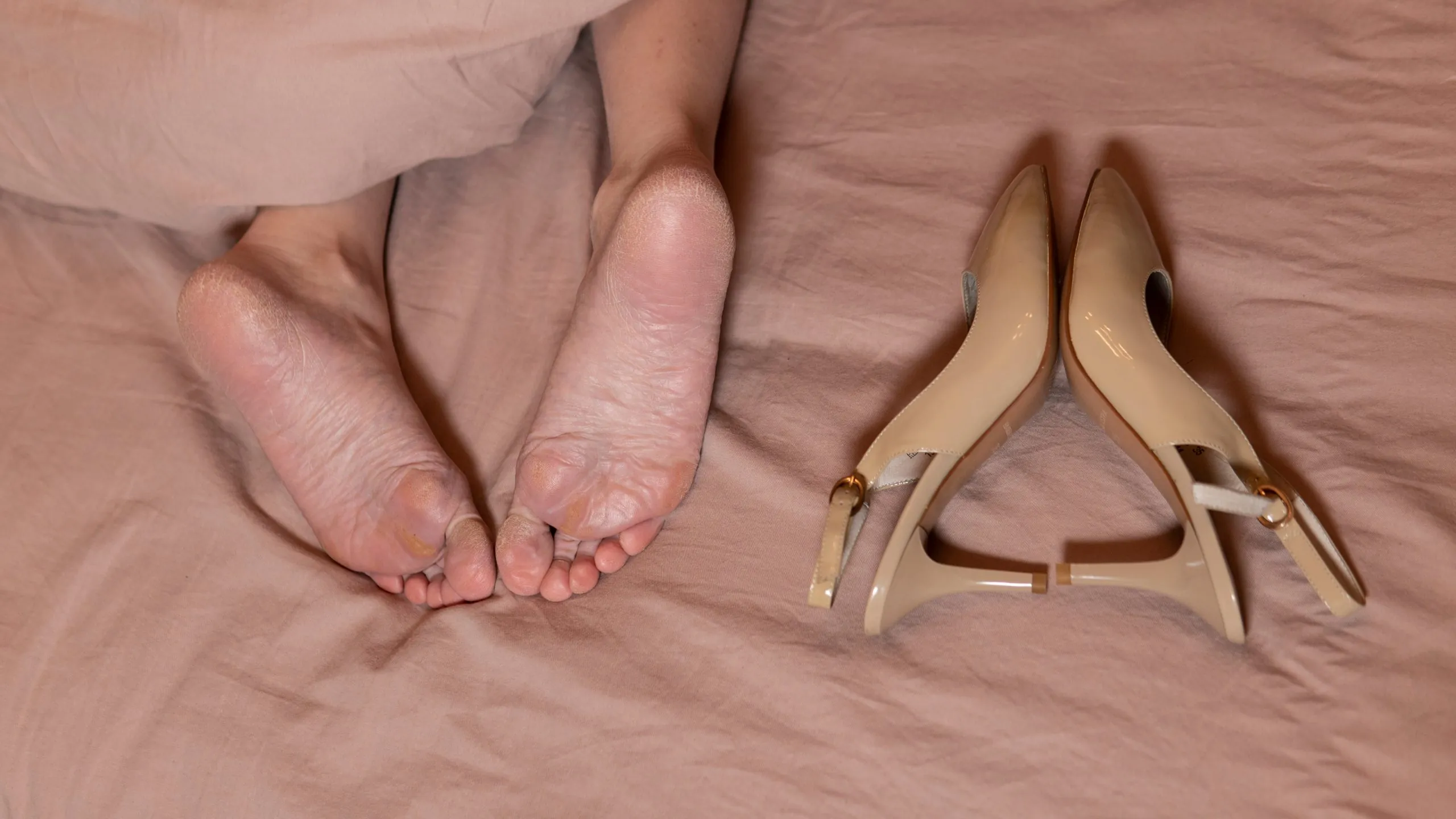All day long, our feet serve us by getting us around, keeping us fit, and maintaining our balance. However, as our steps increase, our feet begin to show wear and tear, so corns and calluses may appear. Corns can become a painful condition, caused by pressure, friction, or misalignment of the feet. Here are some tips to help you get rid of it and keep your feet in great shape!
Causes and consequences of corn on the soles of the feet
Corn, also known as callus or hyperkeratosis, is a skin thickening produced mostly by pressure or repetitive rubbing. It’s of a pale yellow color that forms mostly on the sole of the foot and around the heel, and if left untreated, it can lead to painful cracks. Although this is usually painless, it can sometimes lead to the formation of corns (calluses) or partridge eyes, which are more painful and require the attention of a podiatrist.
Corns can develop as a result of wearing inappropriate shoes, pressure caused by poor foot alignment, circulatory issues, and problems such as hammertoes and hallux valgus.
Time also plays a role. Corns develop as the fat layer beneath the heel loses volume with aging. The heel is thus less able to absorb shock when the foot meets the ground because it has less fat to cushion it. As a result, the skin hardens to better withstand the impacts, forming a robust corn.
Finally, this formation is more problematic for people with diabetes because it can lead to the formation of difficult-to-heal corns. That’s when you will require a consultation with the podiatrist.
Home remedies to get rid of corn
Do you have to remove the corn from beneath the feet, even if it isn’t painful? Seeing as corn can harden over time and become problematic, the answer is yes. Here are three simple things you can do to take care of your feet in the comfort of your own home:
- To assist exfoliation, soak the corn beneath your feet in water for about 15 minutes to tenderize it.
- Then use a pumice stone to exfoliate your feet. But make sure you don’t do it more than once a week. Excessive rubbing of the pumice stone can exacerbate calluses, which can be damaging to your feet.
- Apply a moisturizer to your skin, paying careful attention to the most sensitive regions. Foot moisturizing on a regular basis helps to avoid cracks and fissures in the long run. In all seasons, remember to hydrate your feet every day.
Consider soft, well-cushioned shoes that adapt to the contour of your feet while reducing pressure and friction when it comes to footwear.
Podiatric corn removal
When should I make an appointment with a podiatrist? A visit to a health care expert is required if your feet are sore or have infected calluses. Depending on the health and condition of your feet, the podiatrist may prescribe one of the following procedures to treat corns and calluses:
- Using a moisturizing lotion made particularly for your feet.
- Wearing insoles and orthotics: this will help protect your feet from the trauma caused by corns.
- Corn and callus removal: removing corns, calluses, or partridge eyes through a painless operation.
- Surgical toe straightening: a surgical procedure that corrects hallux valgus or straightens the toes.
Visit FootNetwork for a rapid treatment
Corns, in general, are a type of microtrauma to the foot that is very straightforward to cure. However, if you have diabetes or inflamed calluses, you should see a podiatrist right away. FootNetwork’s health professionals are trained to treat calluses and corn. Make an appointment at a clinic near you now.

